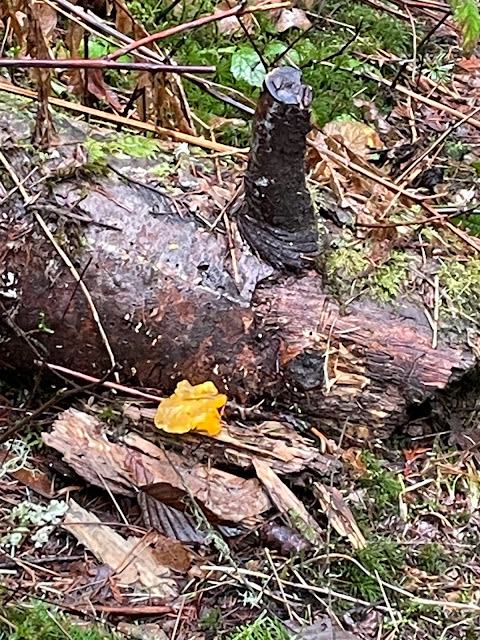30 January, 4 February
A late visit to the Wetlands and Forest, delayed by a very wet and windy weekend.
The warm rain cleared the snow from the area, leaving lush undergrowth and moss. The sword ferns which had appeared to have been frozen have made a splendid recovery.
The abundance of mushrooms has diminished. This stump, once adorned with sulfur tuft mushrooms,
(Click on this photo to enlarge it--there are mallard, bufflehead, and at the left of the photo a slightly blurry ring-necked duck.)
There is a mallard in this shot and two small birds that may be pied-billed grebes.
A resident bald eagle sat on his usual fir tree, in all likelihood observing the waterfowl and planning his lunch.
The mountains were mostly obscured by patchy cloud,
A fine Sunday, high clouds but Arrowsmith was visible.
Unfortunately the clarity of the view makes it plain that the seasonal snow pillow is alarmingly low.
The morning got off to a rather slow start for bird populations. We heard Pacific wrens, but didn't see them. Later we were privileged to see an unanticipated visitation. (read on!)
The forest is lush after the snowmelt and rain. Mosses are increasingly abundant. This tree shows a fine and varied growth.
A mysterious growth of moss and fungi has appeared on a tree stump, accompanied by woodpecker drilled holes:
The Muppet in Need of a Haircut looked as though he was bored, showing a huge yawn.
A very young huckleberry bush is emerging from a stump.
There had been a strong wind during the week. A lesson awaited us on why we don't walk in the woods on windy days.
On our approach to the Marsh, we could see that the higher water level had brought mallards closer to the dock.
As usual, we sat for some time, enjoying the view and hoping for the arrival of more waterfowl. There was an assortment of waterfowl at the southeast end of the Marsh, but very distant and not very lively.
BUT:
As we left, we heard a cacophony of what Roger Tory Peterson described as like an host of Parisian taxi horns: https://macaulaylibrary.org/asset/527184 (Not my recording--from Cornell University's Macaulay Library collection, but much like what we heard.) As my colleague counted, I tried to photograph a flock of about sixty trumpeter swans as they flew toward the southeast end of the Marsh
where they settled.
and two very big flocks of ducks, one of which I think were wigeons
We moved on eventually, after watching what had been a memorable gathering. Once again, the Forest and Wetlands had provided us with splendid views.




































Comments
Post a Comment